Fresh blooms decorate Draped Flowers Curtain woven from paper
Pockets for holding flowers are incorporated into these curtains woven from paper threads, created by artist Akane Moriyama and design firm Umé Studio.
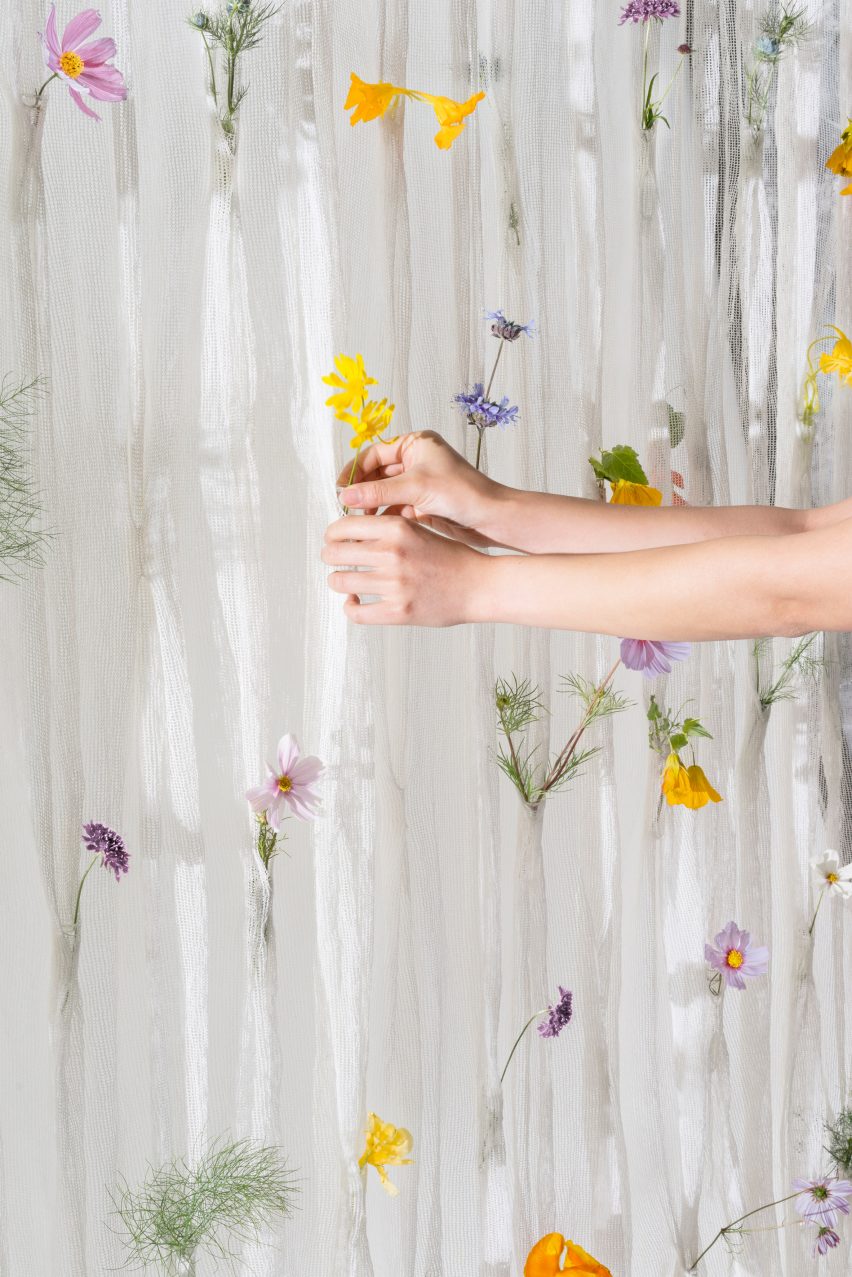
The knitted Draped Flowers Curtain contains over 100 pockets where fresh flowers can be placed.
It is made from a durable thread spun from washi – a type of Japanese paper that can be made from bamboo, hemp, rice, wheat or jute. The craft is registered on the UNESCO Intangible Cultural Heritage list.
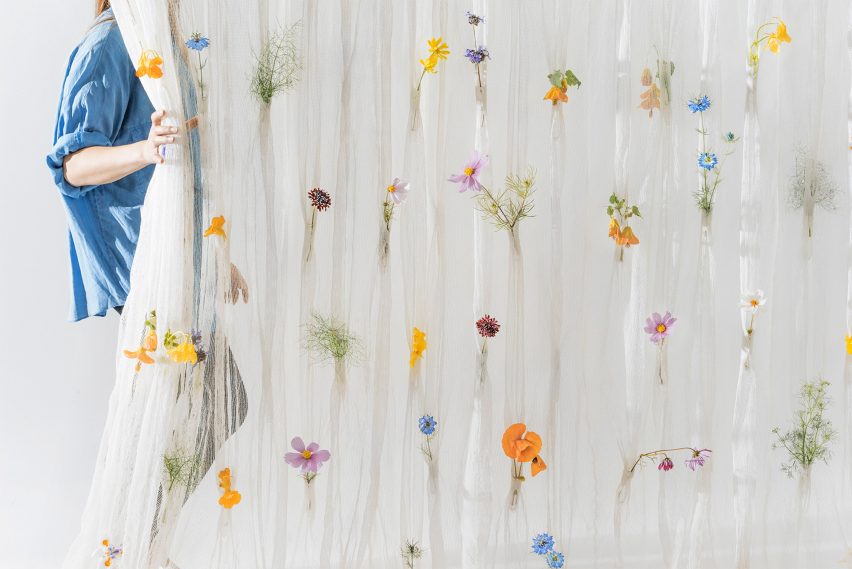
Moriyama, a Japanese textile designer based in Stockholm, first created the Draped Flowers Curtain for a 2010 installation in the Swedish capital.
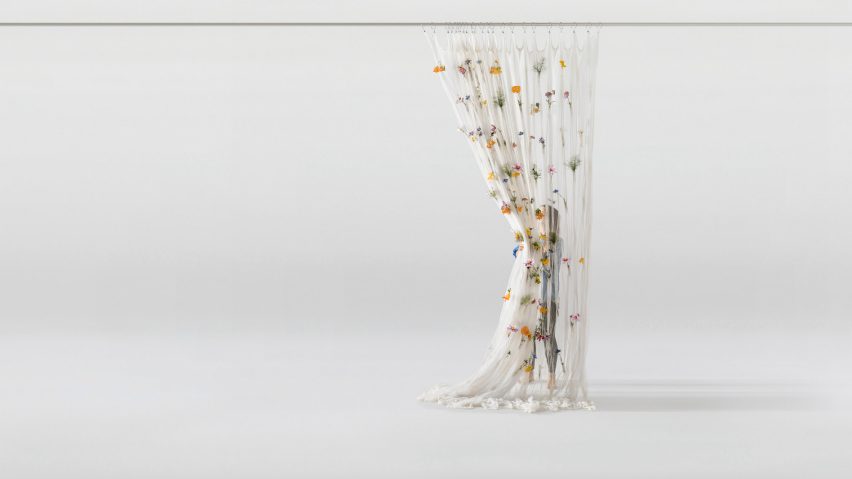
She worked with California-based Umé Studio to revisit the project, replacing linen threads with the washi strands.
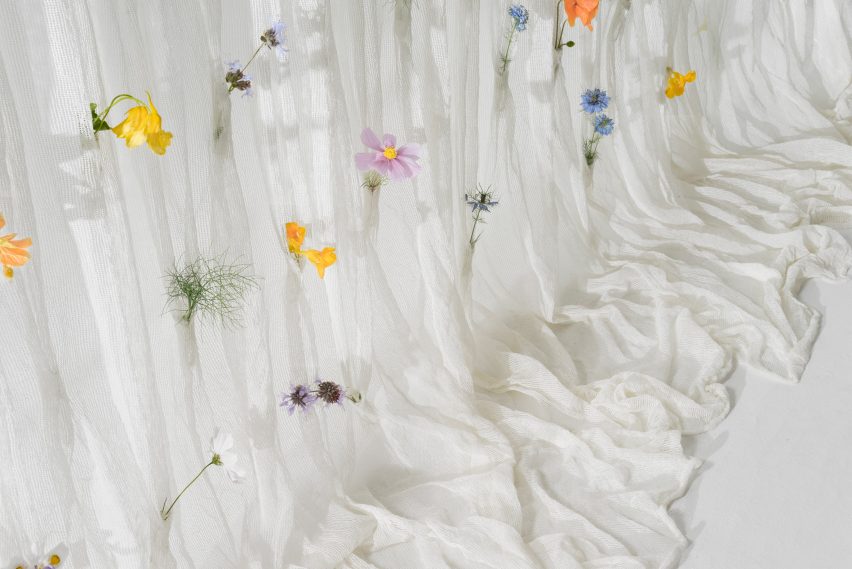
"The curtain is produced in a limited run of 30 pieces and every step takes place in a different small factory in Japan, each dedicated to its own unique craft and technique," said Umé Studio.
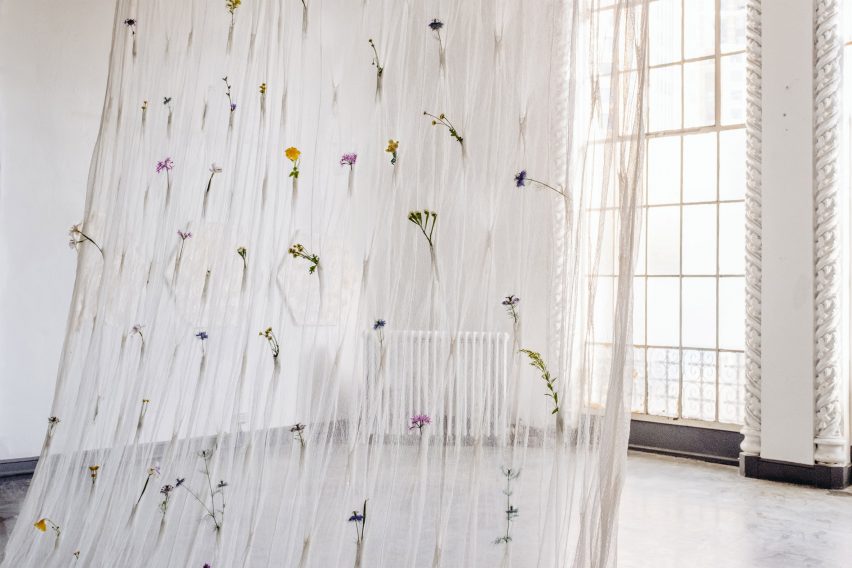
"It begins in Shikoku, where washi paper is made from the veins in the leaves of the Manila Jute plant. Individual leaves are laboriously inspected before being picked by master washi makers, who ensure the leaves are mature before pressing them into resilient washi."
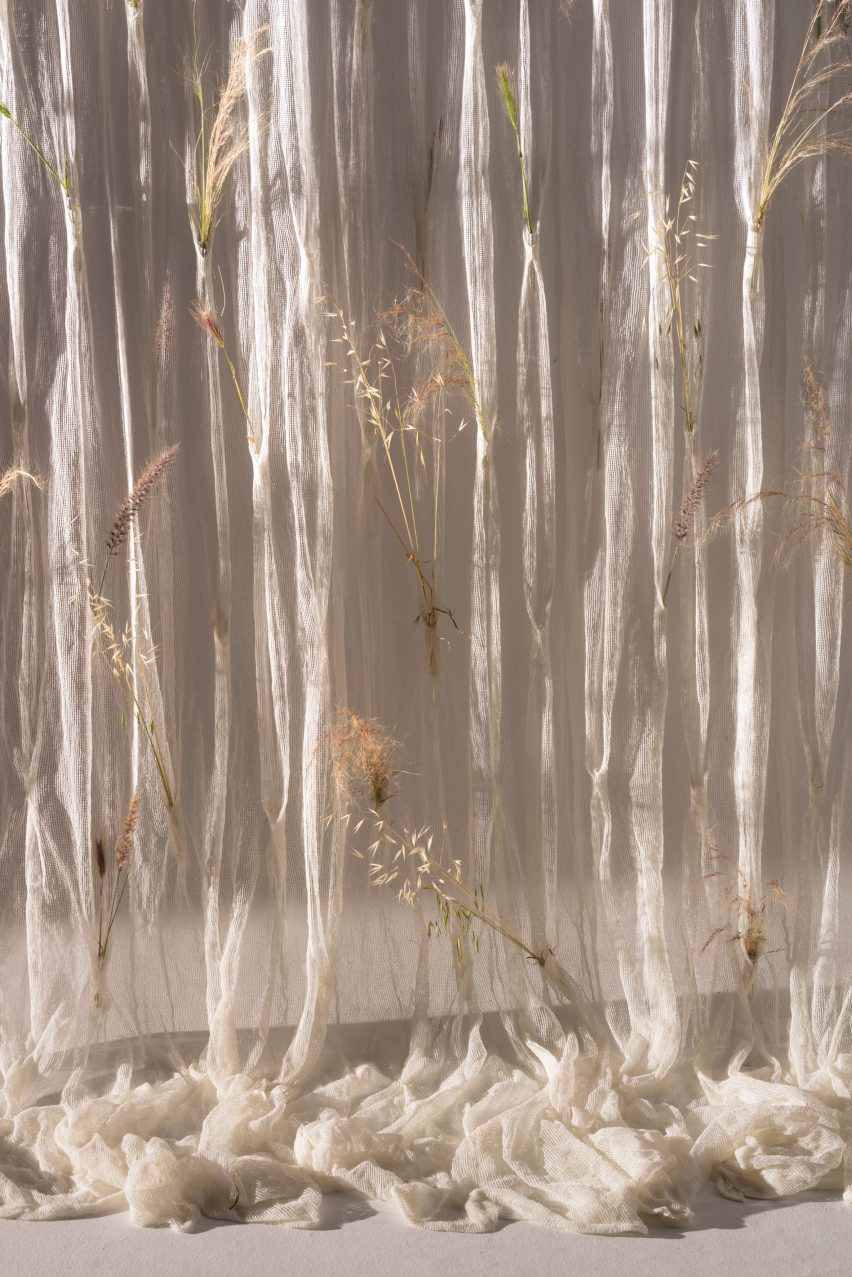
The washi strips are then spun in a facility in Fukui, resulting in a flexible and durable thread, which is then knitted into the curtains in a small workshop near Tokyo.
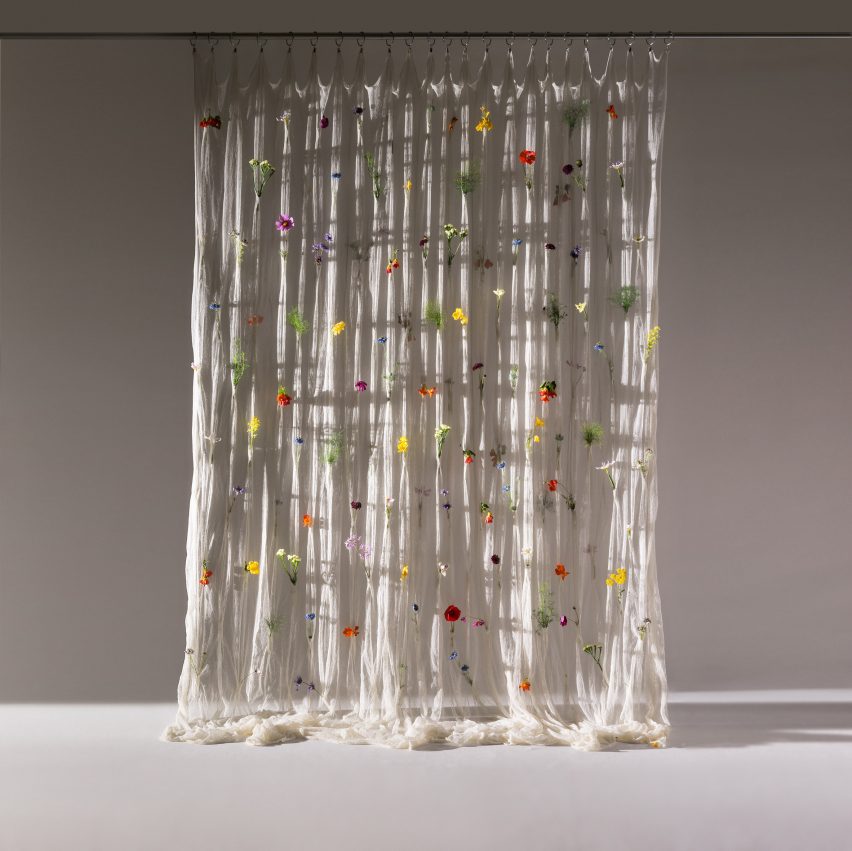
When finished, the cloth can be customised and decorated with whatever foliage its owner prefers. It is also organic, washable and free of chemicals.

The translucent curtain is part of a collection called Objects for Everyday Living, in which everyday objects are designed with playful elements intended to enliven the typically mundane items.
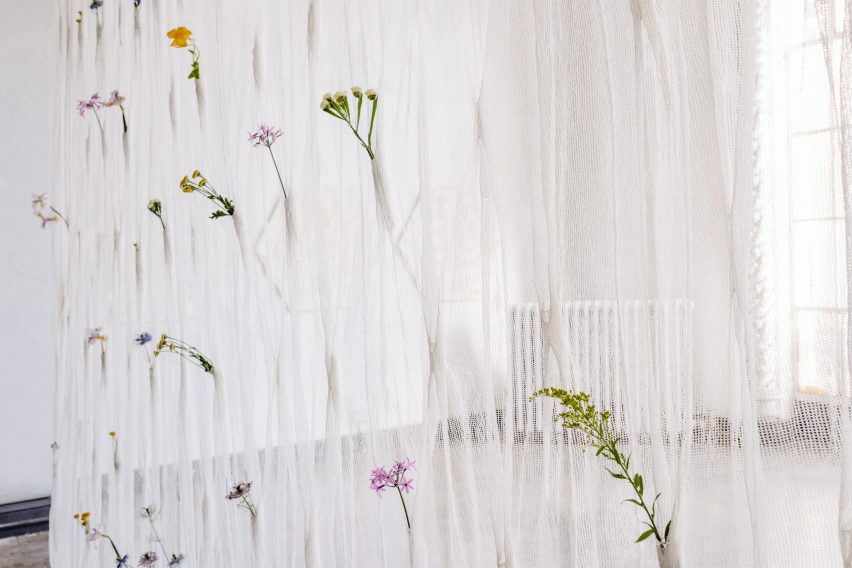
The curtain will be on show at WestEdge Design Fair in Santa Monica, California, which takes place 19-22 October.
Umé Studio was founded by Victor Lefebvre and Mei-Lan Tan, who previously worked at architecture firm Herzog & de Meuron. Based in Oakland, California, they collaborate with artisans all over the world to promote century-old skills and techniques.